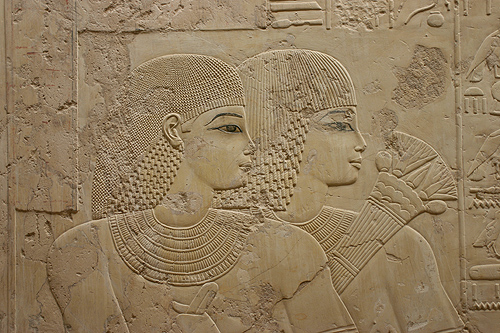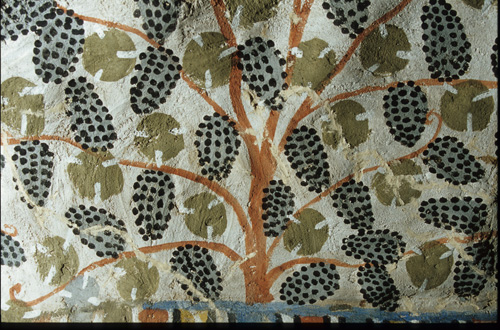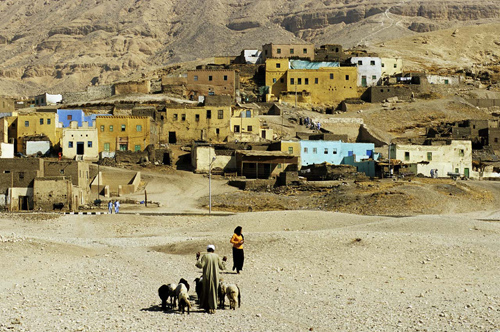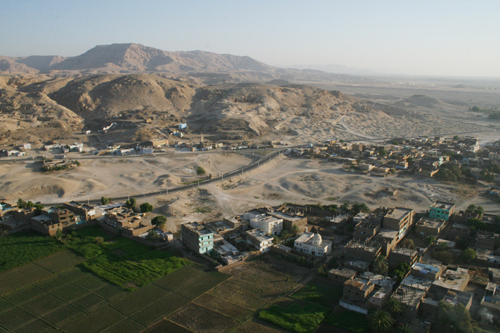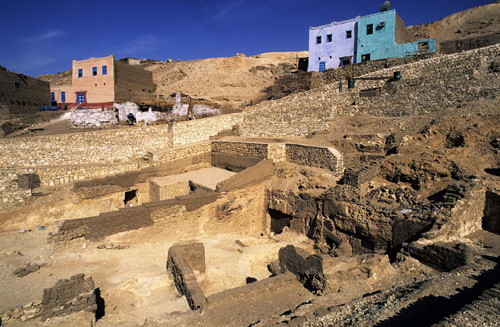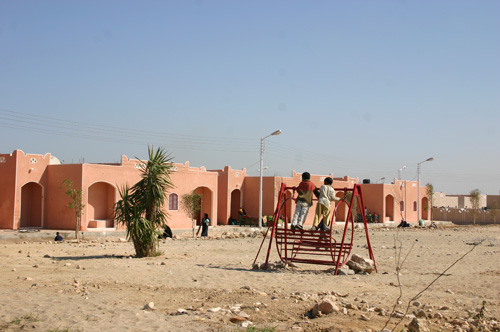|
NEW BOOK:
Lost Tombs of Thebes
There are more than 441 such private tombs in the Theban necropolis, and many are essentially unknown, even to scholars in the field. A great number of these tombs are beautifully decorated with scenes that show the daily life of the ancient Egyptians, their funerary practices and beliefs, and the lives of the tomb owners, including the jobs that they performed and the offices that they held. Many of these tomb scenes also shed light on the lives of the rulers buried in the nearby royal necropolis, the Valley of the Kings.
To me, the most important part of this book is the section on saving the necropolis of Thebes. The history of the exploitation and destruction of these tombs goes back centuries, to a time when early explorers and adventurers would hire local people from villages like Quft to take them around to the tombs in the area. Many of these villagers built homes right on top of the ancient site, creating the modern villages that dot the region.
Their story has been told by Caroline Simpson, who has developed an exhibition on the history of Qurna that is being put in place in one of the houses in the village. Although these settlements have a rich history, they were destroying the ancient history that lay beneath them. Some of the houses incorporated the courtyards of the resting places of the nobles of Thebes. Water and trash were damaging the decoration and even the structural integrity of the tombs. The damage caused by the daily activities of these people to the tombs was compounded by the fact that they stole constantly from the ancient cemeteries on which their homes were built. One man even had a tunnel under his home leading directly into an ancient tomb, which we learned about from archaeologist Susan Redford, who was excavating there. Just last month, we found half of an ancient statue in one of these houses. Over the last 50 years, rich foreigners have also hired these villagers to illegally build homes for them on the West Bank. Their unscrupulousness is shown by the fact that when the police came to tear down these buildings, the villagers filled them with women and children so that they could not be demolished.
When I became Secretary General of the Supreme Council of Antiquities in 2002, I began to think of what could be done to save these tombs. I always say that God may create millions of people, but nothing like the pyramids and other monuments of ancient Egypt can ever be created again. I knew that something had to be done to stop the sight pollution and the damage to the ancient tombs that was being caused by these modern settlements. It became apparent that the only way to save the ancient necropolis was to relocate the people who were destroying it. We were able to obtain 200 million Egyptian pounds to fund the construction of a new village at a place called El-Taref. With the help of Samer Farag, the governor of Luxor, and Ahmed El-Tayeb, the director of El Azhar University, we convinced the villagers to move there. Now, they have safe homes with modern services and conveniences. Many of them have taken the first hot showers they have had in their lives. We made arrangements not only for them to have new homes, but also for them to keep their businesses. The people who had shops and factories above the tombs have been given new workshops and stores on the other side of the paved road that runs past the necropolis. We have decided to demolish most of the old buildings above the tombs, to remove the sight pollution, but we did choose to preserve 25 of them in order to keep a record of the history and heritage of the village.
For reasons that I do not understand, our efforts to reach a satisfactory compromise between the welfare of the local people and the urgent need to preserve the tombs have not always been well received. A recent mission to Luxor from the UNESCO World Heritage Committee and ICOMOS, organizations that should be dedicated to the welfare of historic monuments, expressed concern for the modern village of Qurna, even though we have selected 25 of the most historically important homes in the village for preservation in addition to our work to offer a better life to the villagers. I would like to raise the question to the world of what more we can do.
I believe that our work to save the Lost Tombs of Thebes should serve as an example of how we can work to save our heritage while caring for the needs of the community at the same time. Within a short time, my respected colleague Janice Kamrin will have finished editing my English, and my new book will be published. I hope that it will bring attention to the beauty of these amazing tombs, and at the same time to the importance of preserving our heritage while at the same time caring for our communities.
|
